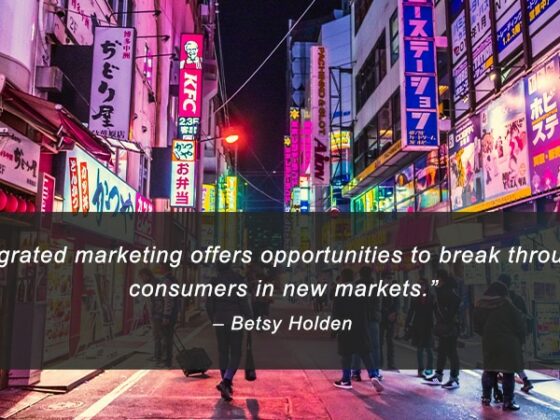Mark Rademaker is the Global Head of Hospitality at Adyen, a fintech company that facilitates payments for the Hospitality Industry. With over 15 years of experience in the travel sector, including roles in airlines, Mark taps his passion for educating the next generation of the industry’s leaders and throws the spotlight on payments, an aspect of the guest journey that is commonly forgotten but that has a major impact on experience. Read on to find out more about the Payment technology and how it can work in your favor.
How are payments and guest experience connected?
As a part of the Payments Industry, there are lots of touch points in the guest journey that we can support or enable. Let’s be honest, oftentimes this isn’t an industry that’s considered a catalyst to support growth, new experiences, or guest journeys, but rather as a mode to just accept payments. During the pandemic, we saw a lot of hotels having to pivot and focus on new channels just to ensure their livelihood, and with that, having to accept payments for a variety of different reasons, opening a door for many payment companies to offer digital products to support this need.
But what we’re now seeing is them taking the next step. Fundamentally, if hotels want to take payments and use them as an enabler, they need to start thinking about what omnichannel and unified commerce bring. Omnichannel is a pretty well-known term denoting the offering of multi-sales channels to guests, and unified commerce is about linking those different channels to provide a seamless guest experience throughout the hotel’s entire property, front and back end. This, of course, takes a lot of work as more and more channels are added, but it can be a very fruitful exercise for any hotel as, at the end of the day, they’re able to provide guests with a fantastic guest journey. That fantastic guest journey is a big driver for us in the Payments Industry, too– we are trying to inspire hotels to understand where payments can help them in their business.
Where would you say hotels differ the most from other industries in relation to payments?
At Adyen, we work with many different verticals, as one can imagine, and one of the exciting differences between hospitality and other businesses is where payments sit in their organization. For luxury retail and digital companies, payments will sit inside of the technology area, or it might be under a strategy arm of the company. I believe this has a direct correlation to the understanding that payments can improve automation and processes. With hotels, generally speaking, payments falls under finance. As we see more stakeholders embrace payments as a method to unlock better guest experiences, we should see payments decision-making be more influenced by other parts of the hotel.
Additionally, hotels deal with large amounts of customer data, which can be leveraged to provide a lot of insight. Historically, the industry has been able to work with great partners to achieve that, but as they start partnering with an increasing number of providers, data can get lost or siloed and stop being useful.
Payments data, in particular, can be very exciting. By and large, hotels have a pretty good understanding of who the guests are when they’re staying with them, but there’s a missing element of that, which is how to drive conversion of those city guests into hotel guests in the near future, and that is the big thing that we want to provide.
Zooming out a bit and taking a longer view of hotel groups, how do they know to supplement their loyalty programs? How do they understand where guests are staying? How often are they staying? These are questions hotels want to understand and they surely look into it, but again, the missing element would be guests who are maybe not on a loyalty program but still come and play a round of golf, dine, or use the spa, and they won’t necessarily be captured in these insights. However, I believe that through good partnerships, such as what we have with Shiji, hotels will be able to obtain some of that interesting data, and that can certainly come from payments as well.
Hotels have a different relationship with their guests compared to other businesses. Does that give them a leg up regarding payments?
Hotels have a very keen sense of what the customer wants, far more than other businesses, and that is already a huge step in the right direction. Taking that information and applying it to payments is a big advantage, and we have already seen massive progress in some of the hotels that we’ve been working with. For instance, the ability to offer local payment methods. What you typically see is a hotel in Germany or Mexico that accepted credit cards and maybe one or two of their local payment methods, but when your guests are coming from all over the world, why not offer their preferred payment method from back home? We are beginning to see a shift in this direction, which is positive and supports hoteliers’ ambitions to build a more direct channel strategy.
4 Tips for Payments in 2023
- Payments is an important touch point of a guest journey, albeit often an overlooked one
- Seamless communication and integration of payments across multi-channel throughout a hotel can greatly enhance the quality of a guest’s experience
- Payment technology supports finance teams to consolidate reconciliation efforts and to improve data at both the property and corporate levels.
- Remember to include other departments of the hotel in your payments strategy.
Hotel guests are expected to provide payment information multiple times during their journey, and it is unpleasant and inefficient. What does a streamlined payment experience look like? How does it help?
If we bridge these channels and offer one solution across the board, it translates into choices for the guest: Do they want to check in using a kiosk or a mobile app, or would they rather have a high-touch experience and come to the front desk, or perhaps complete the process in the room? All this requires the use of a single platform, and the underlying technology centers on tokenization and the ability of the payments company to take that payment and offer a host of solutions that allow freedom of choice. Also, I believe COVID has demonstrated that, even though you might have luxury properties that aim to offer a high-touch experience, there’s always a subset of guests who would like to have the option of a low-touch experience as well. I’d say that giving them that freedom of choice is almost a necessary step at this point.
Can combining unified commerce and the often-idealized concept of the single guest profile empower a hospitality business?
That’s the dream, it’s really where we want to get to, and we are closer to it than we think. Hotels are doing a much better job of accruing and getting material insights from the data that they have, but as I said, there are some missing elements. This is where supplementing that data with some of the payment data I’ve been referring to can help to achieve that ideal customer profile. Getting the full profile of someone is critical, with information such as how many times have they been there to dine, whether they were on business or leisure, and whether have they stayed with the hotel before or not.
What are some areas that the hospitality industry at large could improve regarding payments?
If I was opening a hotel, I’d want to have the freedom of choosing the best-in-class products for each of the technology touchpoints, while still keeping consistent with payments across the hotel’s systems. By doing that, not only would it be possible to offer a seamless transition for guests, but the finance teams will also be very happy to deal with only one provider for reconciliation and settlement, which is nice.
RELATED:
However, it’s important to keep in mind the level of risk this exposure to multiple channels can present, what with credit card fraud and data breaches that the hospitality industry is exposed to, maybe even more so than other industries. Therefore, it is imperative to have a good provider, one that can manage these risks and take some of that responsibility.
But ultimately there needs to be an improvement in the understanding of payments and the impact it can have to drive automation and guest experiences. As we’ve discussed today, if hotels involve more stakeholders in their payments strategy, it will be a very positive step in the right direction.






